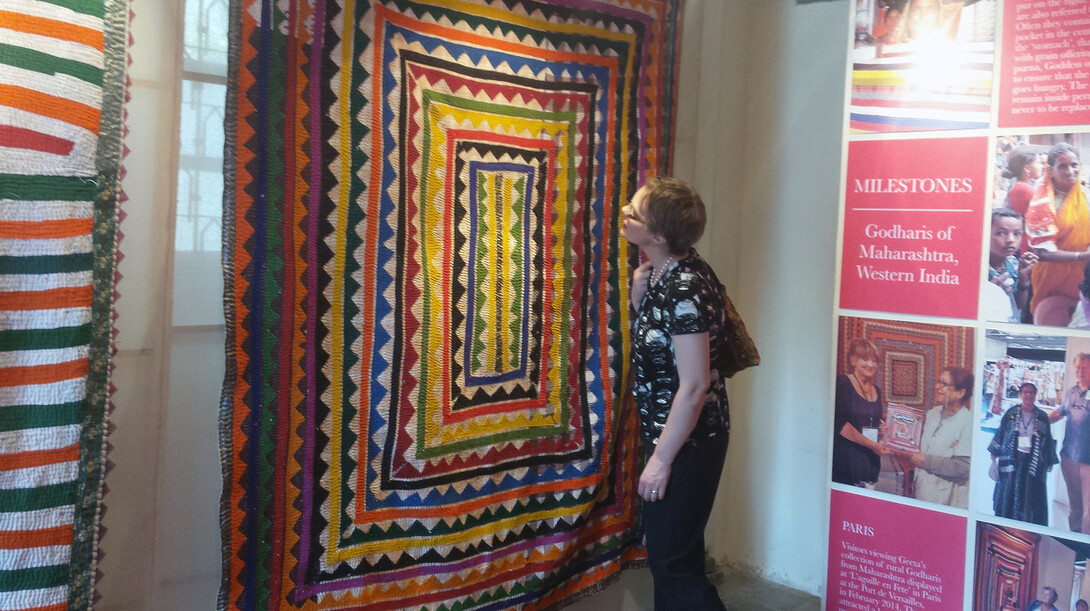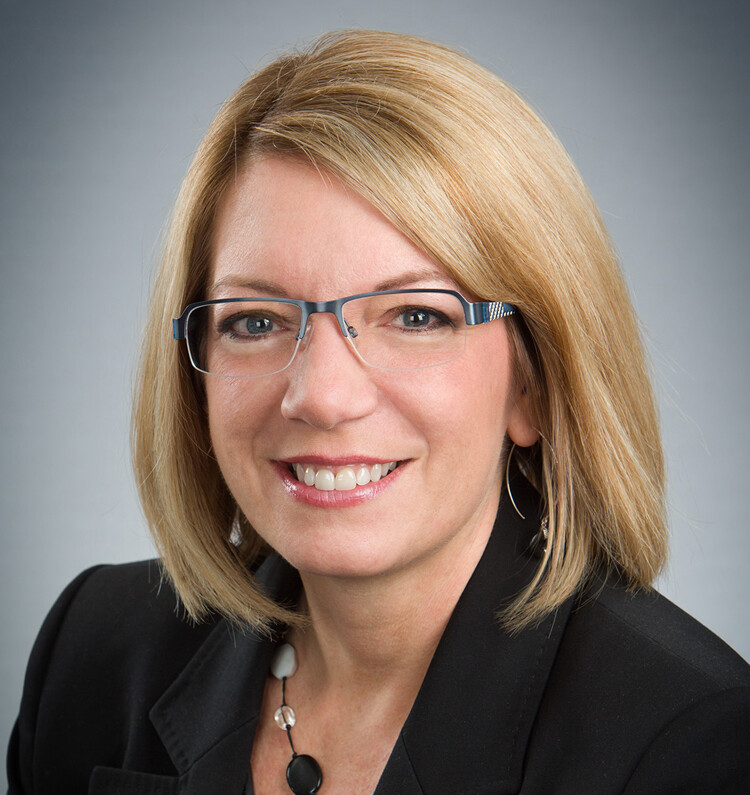
A recent trip to India is helping UNL’s International Quilt Study Center and Museum expand global connections as it builds a world-class collection of quilts.
Marin Hanson, curator of exhibitions, and Leslie Levy, executive director, traveled to Mumbai, India, Feb. 1-4 to attend “Homesewn Godharis of Maharashtra” at Coomaraswamy Hall at Chhatrapati Shivaji Maharaj Vastu Sangrahalaya, formerly the Prince of Wales Museum of Western India. The exhibition featured the collection of Geeta Khandelwal, a Mumbai collector, author and quiltmaker.
During the exhibition, Hanson and Levy had the opportunity to connect with makers, collectors and influencers in the local arts, museum and academic community.
“To have the quilts, the makers and the experts together in one locale gave us the perfect opportunity to expand our knowledge of quiltmaking in the area and make valuable connections,” said Levy. “The trip opened doors to new international possibilities for us, such as hosting exhibitions, adding to our collection and the ability to meet people from a variety of countries that are interested in art of quilting.”
Khandelwal is a longtime supporter of the IQSCM, the world’s largest collection of publicly held quilts. She previously served on the museum’s international advisory board and helped establish and bolster its South Asian collection. In 1998, Khandelwal donated two pieces, including an early 20th century quilt from Maharashtra, which were the museum’s first Indian quilts, and she went on to donate many other significant pieces. Today, the IQSCM is home to nearly 100 quilts from India.
In 2009, Khandelwal hosted IQSCM researchers — including Hanson and then-director Patricia Crews, curator of collections Carolyn Ducey and IQSCM fellow Mary Ellen Ducey—as they researched quiltmakers in Kutch, Gujarat, and added new regional pieces to the museum’s collection. One of the pieces acquired during this trip, a 20th century Ralli quilt, will be featured in “Getting to Know You,” the first exhibition to show in the IQSCM’s newly expanded galleries, which open in June.
Khandelwal’s collection and research, which were displayed in the Mumbai exhibition, are considered the most comprehensive of quilts made in Maharashtra.
“India is a country that is rich with quiltmaking traditions,” Hanson said. “Nearly every community and village has their own quiltmaking practice. Understanding regional styles is so important to comprehending the entire vision of Indian quiltmaking. Working in the state of Maharashtra, Geeta Khandelwal has collected and saved the stories of the individual quiltmakers and documented the women working in their homes. Because of her work, we not only understand what the quilts look like, but who the makers are.”
Like the research done at the IQSCM, Khandelwal’s work documents and preserves a traditional folk art that is rapidly disappearing.
During their visit to India, Hanson also gave a presentation of “Quilts in Common: Quiltmaking Around the World and Across the Centuries.” Through the lecture, Hanson shared some international and cross-generational connections in quilt design, techniques, and imagery, as represented by diverse pieces in the IQSCM collections.
“We can draw connections between quilts from different times and places that aren’t normally associated with each other, demonstrating that quiltmaking and patchwork are a basic human endeavor,” she said. “Often, people are aware of traditions in their own area, but they aren’t aware of traditions from other parts of the world and are surprised and pleased to learn of visual connections between them.”








